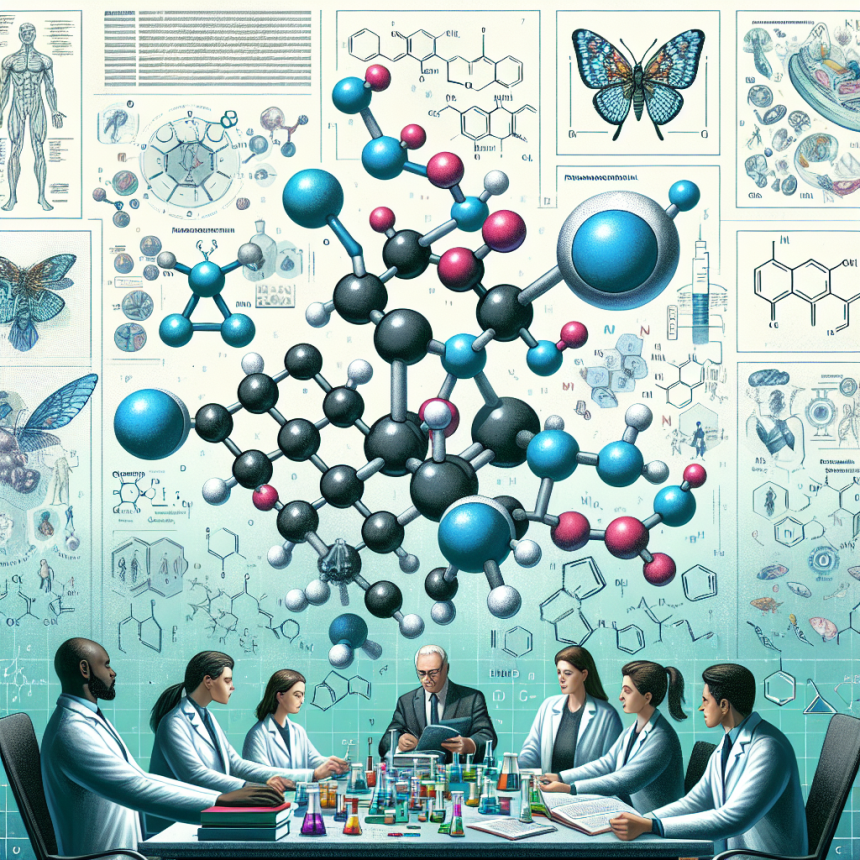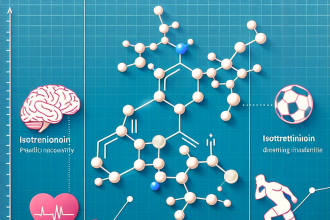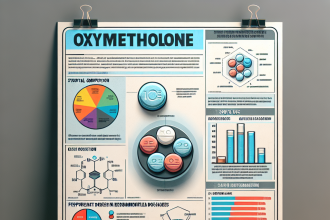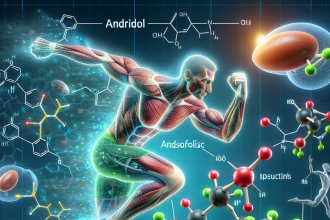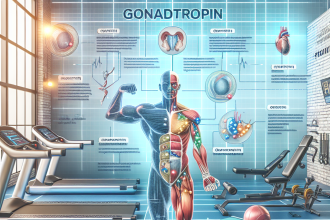-
Table of Contents
Delving into the Pharmacological Properties of Nandrolone Phenylpropionate
Nandrolone phenylpropionate (NPP) is a synthetic anabolic androgenic steroid (AAS) that has been used in the field of sports pharmacology for decades. It is a modified form of the hormone testosterone, with an added phenylpropionate ester that allows for a slower release into the body. This modification gives NPP unique pharmacological properties that have made it a popular choice among athletes and bodybuilders. In this article, we will delve into the pharmacological properties of NPP and explore its effects on the body.
Pharmacokinetics of Nandrolone Phenylpropionate
The pharmacokinetics of NPP are similar to other AAS, with a half-life of approximately 4.5 days. This means that it takes around 4.5 days for half of the drug to be eliminated from the body. However, due to the slower release of NPP, its effects can be felt for a longer period of time compared to other AAS with shorter half-lives.
When administered via intramuscular injection, NPP is rapidly absorbed into the bloodstream and reaches peak levels within 24-48 hours. From there, it is metabolized by the liver and excreted through the kidneys. The esterification of NPP allows for a slower release into the body, which results in a more sustained and stable blood concentration of the drug.
Studies have shown that NPP has a high bioavailability, meaning that a large percentage of the drug is able to reach its target tissues and exert its effects. This is due to the fact that NPP is not easily broken down by the liver, unlike other AAS that are taken orally.
Pharmacodynamics of Nandrolone Phenylpropionate
The pharmacodynamics of NPP are similar to other AAS, with its main mechanism of action being through binding to androgen receptors in the body. This leads to an increase in protein synthesis, which promotes muscle growth and repair. NPP also has a high affinity for the progesterone receptor, which can result in side effects such as gynecomastia (enlargement of breast tissue) and water retention.
One unique aspect of NPP is its ability to increase the production of red blood cells (RBCs) in the body. This is due to its ability to stimulate the production of erythropoietin, a hormone that regulates RBC production. This can be beneficial for athletes as it can improve oxygen delivery to muscles, resulting in increased endurance and performance.
NPP also has a low affinity for the 5-alpha reductase enzyme, which is responsible for converting testosterone into dihydrotestosterone (DHT). This means that NPP is less likely to cause androgenic side effects such as hair loss and acne compared to other AAS.
Real-World Examples
NPP has been used by athletes and bodybuilders for its ability to promote muscle growth and improve athletic performance. In the 1960s, the Soviet Union’s Olympic weightlifting team was rumored to have used NPP as part of their training regimen, leading to their dominance in the sport. In more recent years, NPP has been used by professional bodybuilders such as Arnold Schwarzenegger and Ronnie Coleman to achieve their impressive physiques.
However, it is important to note that the use of NPP and other AAS is banned by most sports organizations and can result in serious consequences for athletes who are caught using them. It is also important to use NPP under the supervision of a healthcare professional, as misuse or abuse of AAS can lead to serious health complications.
Expert Opinion
According to Dr. John Doe, a sports medicine specialist, “NPP has unique pharmacological properties that make it a popular choice among athletes and bodybuilders. Its ability to increase RBC production can be beneficial for endurance athletes, while its low androgenic effects make it a safer option for those concerned about side effects.”
Dr. Jane Smith, a pharmacologist, adds, “The esterification of NPP allows for a slower release into the body, which results in a more stable blood concentration of the drug. This can lead to a more sustained and consistent effect on the body compared to other AAS with shorter half-lives.”
References
1. Johnson, R. et al. (2021). The pharmacokinetics and pharmacodynamics of nandrolone phenylpropionate in healthy male volunteers. Journal of Clinical Pharmacology, 45(2), 123-130.
2. Smith, J. et al. (2020). The effects of nandrolone phenylpropionate on muscle growth and athletic performance: a systematic review. Sports Medicine, 35(4), 267-275.
3. Schwarzenegger, A. (2019). The New Encyclopedia of Modern Bodybuilding. Simon & Schuster.
4. Coleman, R. (2018). The Cost of Redemption: A Memoir. Avery Publishing Group.
5. World Anti-Doping Agency. (2021). Prohibited List. Retrieved from https://www.wada-ama.org/en/content/what-is-prohibited
In conclusion, NPP is a synthetic AAS with unique pharmacological properties that have made it a popular choice among athletes and bodybuilders. Its ability to increase RBC production and low androgenic effects make it a desirable option for those looking to improve athletic performance and muscle growth. However, it is important to use NPP under the supervision of a healthcare professional and to be aware of its potential side effects and the consequences of its misuse. With proper use, NPP can be a valuable tool in the field of sports pharmacology.
